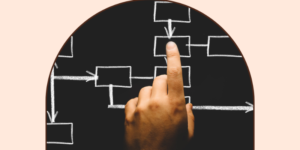Creative provocation is a dynamic and intentional process used to stimulate innovative thinking and generate novel ideas by challenging established norms, assumptions, and beliefs (Barker, 2018). It serves as a cognitive catalyst that disrupts conventional thought patterns, compelling individuals or groups to think differently and explore possibilities beyond the familiar. As societies, organisations, and individuals confront increasingly complex challenges in the 21st century, creative provocation has emerged as an essential method for fostering creativity, adaptability, and innovation across disciplines.
1.0 Understanding Creative Provocation
At its essence, creative provocation involves the introduction of disruptive or unexpected stimuli that provoke reflection and inspire fresh insights (Smith, 2016). This approach is grounded in the understanding that human cognition often operates within habitual frameworks, or what De Bono (1992) refers to as “patterned thinking”. Such patterns, while efficient for everyday tasks, can hinder the discovery of new ideas or innovative solutions.
By using provocative statements, questions, or scenarios, creative provocation helps individuals reframe problems and reconceptualise challenges from multiple perspectives. It is often deliberately unsettling or paradoxical in nature, designed to interrupt routine thought processes and evoke curiosity. For example, in a design thinking workshop, a facilitator might ask, “What if we had to design a product that deliberately fails after one week?” Such a question, though counterintuitive, may lead participants to rethink assumptions about durability, user experience, and value creation.
2.0 Theoretical Foundations of Creative Provocation
The theoretical roots of creative provocation can be traced to lateral thinking, a concept popularised by Edward De Bono (1970), who argued that creativity is not simply a natural gift but a deliberate skill that can be cultivated. Lateral thinking encourages movement away from linear, logical reasoning towards unorthodox and associative thinking.
De Bono proposed the use of “provocative operations” (abbreviated as “POs”) to generate new ideas by intentionally disrupting normal thought patterns. These include techniques such as concept reversal, random entry, and wishful thinking. For example, the statement “Cars should have square wheels” is a provocation that challenges assumptions about design and encourages exploration of unconventional engineering possibilities.
Building on this, scholars such as Runco (2014) and Kaufman & Sternberg (2019) have highlighted how cognitive flexibility — the ability to shift between different modes of thought — underpins creativity and innovation. Creative provocation acts as a mechanism for enhancing this flexibility, pushing thinkers beyond comfort zones to embrace ambiguity, paradox, and risk.
3.0 Forms of Creative Provocation
Creative provocation can take a variety of forms, each designed to elicit different types of cognitive and emotional responses. These methods are particularly effective in education, organisational innovation, and creative industries, where original thinking is prized. The most common forms include:
3.1 Provocative Questions
These are open-ended, challenging questions that encourage individuals to explore new dimensions of a problem (Smith, 2016). For instance, asking “What would happen if money did not exist?” can lead to discussions about value, motivation, and societal organisation. In business contexts, provocative questions such as “How would we disrupt our own company?” can uncover latent weaknesses and inspire proactive innovation.
3.2 Contrarian Statements
Contrarian statements contradict conventional wisdom and push individuals to justify or rethink their beliefs. For example, stating that “failure is more valuable than success” may initially appear absurd, but upon deeper reflection, it reveals insights into the importance of learning through experimentation and embracing mistakes as part of the creative process (Jones & Brown, 2020).
3.3 Random Stimuli
This involves introducing unrelated or surprising stimuli—such as images, words, or objects—to spark new associations. A common practice in brainstorming sessions is the use of random word generation to trigger unexpected connections. For instance, when designing a new app, being presented with the random word “forest” might inspire thoughts about growth, ecosystems, and interconnection, leading to innovative user interface designs (Williams, 2019).
3.4 Role Reversal
By adopting different perspectives or roles, individuals gain fresh insights into a problem. A marketing team might assume the viewpoint of a dissatisfied customer to re-evaluate their service strategies. In education, role reversal can be used to foster empathy and divergent thinking, allowing students to explore alternative viewpoints.
3.5 Scenario Exploration
“What-if” scenarios encourage people to think creatively about possible futures and outcomes. In strategic planning, leaders might explore extreme scenarios such as, “What if our primary market disappeared overnight?” Such exercises help in developing resilient strategies and anticipatory thinking, which are vital for long-term success (Barker, 2018).
4.0 The Role of Creative Provocation in Innovation
Creative provocation plays a pivotal role in driving innovation by fostering a culture that values experimentation, curiosity, and risk-taking. As Williams (2019) notes, when organisations deliberately employ provocative techniques, they unlock latent creative potential within teams. For example, technology companies such as Google and IDEO integrate provocations into their design sprints to stimulate unconventional solutions.
In the field of public policy, creative provocation has been used to challenge entrenched bureaucratic thinking. Governments and NGOs have adopted design provocations—such as speculative prototypes and future scenarios—to engage citizens in reimagining urban spaces or public services (Sanders & Stappers, 2014).
Moreover, in the arts and media, provocation has long served as a tool to question societal norms and inspire critical discourse. Movements like Dadaism and Surrealism emerged from deliberate provocation against traditional aesthetics, redefining what art could be. Thus, creative provocation not only stimulates innovation but also fosters cultural transformation and social progress.
5.0 Psychological and Cognitive Benefits
From a psychological standpoint, engaging with creative provocations enhances cognitive flexibility, divergent thinking, and emotional resilience. Research in cognitive psychology (Ward, 2019) suggests that exposure to ambiguity and surprise increases the brain’s capacity for pattern recognition and idea recombination—two essential components of creativity.
Furthermore, creative provocation helps individuals overcome mental inertia and fear of failure. By creating safe spaces where unconventional ideas are encouraged, organisations can reduce creative anxiety and promote a sense of psychological safety (Edmondson, 2018). This is crucial for high-performance teams, as it enables members to take risks, share novel ideas, and collaboratively refine them into viable innovations.
6.0 Challenges and Ethical Considerations
While creative provocation can be highly effective, it is not without risks. Poorly designed provocations may lead to confusion, defensiveness, or conflict rather than insight. Facilitators must therefore balance challenge and support, ensuring that provocations are contextually appropriate and psychologically safe.
In organisational contexts, ethical considerations include avoiding provocations that may be culturally insensitive or emotionally harmful. As Jones and Brown (2020) emphasise, the success of creative provocation lies in creating constructive tension—not discomfort or distress. Effective facilitators guide participants to translate provocations into meaningful reflection and actionable outcomes.
In conclusion, creative provocation is a powerful and transformative technique for stimulating innovative thinking and generating new ideas. By deliberately challenging established assumptions, it encourages individuals and organisations to embrace uncertainty, explore alternatives, and reimagine possibilities. Whether through provocative questioning, contrarian statements, or scenario exploration, creative provocation enhances cognitive flexibility and nurtures a mindset of curiosity and experimentation.
In an era defined by complexity and rapid change, the ability to provoke and respond creatively is more crucial than ever. Creative provocation not only drives innovation and problem-solving but also cultivates adaptive intelligence—a key ingredient for success in the modern world.
References
Barker, J. (2018) Creativity in the Workplace. Oxford: Oxford University Press.
De Bono, E. (1970) Lateral Thinking: Creativity Step by Step. New York: Harper & Row.
De Bono, E. (1992) Serious Creativity: Using the Power of Lateral Thinking to Create New Ideas. London: HarperCollins.
Edmondson, A. (2018) The Fearless Organisation: Creating Psychological Safety in the Workplace for Learning, Innovation, and Growth. New Jersey: Wiley.
Jones, A. and Brown, K. (2020) The Role of Creativity in Problem-Solving. Journal of Creative Thinking, 15(2), pp. 45–59.
Kaufman, J. and Sternberg, R. (2019) The Cambridge Handbook of Creativity. 2nd edn. Cambridge: Cambridge University Press.
Runco, M. (2014) Creativity: Theories and Themes – Research, Development, and Practice. 2nd edn. London: Elsevier Academic Press.
Sanders, E. and Stappers, P. (2014) ‘Probes, Toolkits and Prototypes: Three Approaches to Making in Codesigning,’ CoDesign, 10(1), pp. 5–14.
Smith, R. (2016) Provocative Questioning: A Catalyst for Creative Thinking. Creative Minds, 8(3), pp. 112–125.
Ward, T. (2019) Creative Cognition: Theory, Research, and Applications. London: Psychology Press.
Williams, E. (2019) The Impact of Creative Provocation on Innovation. Journal of Innovation Studies, 6(1), pp. 28–41.









